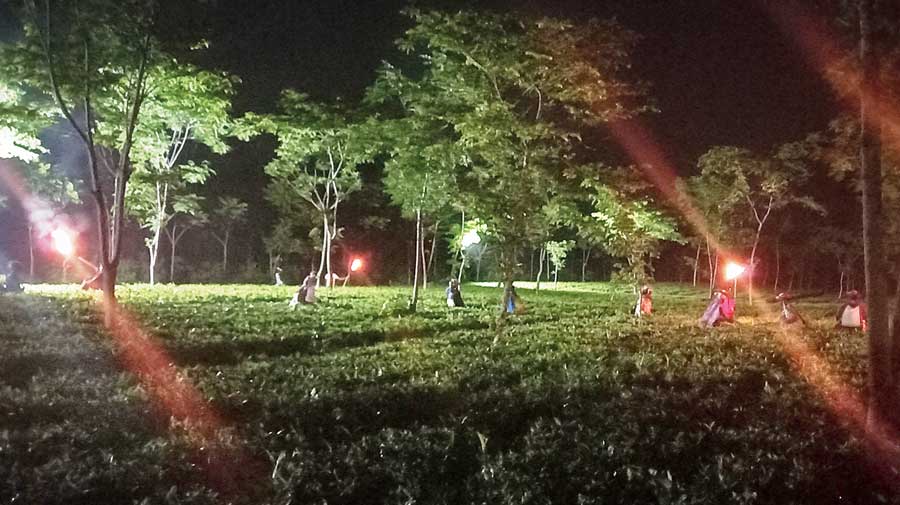Majherdabri has become the first estate in the Dooars to pluck tea leaves in the moonlight which, according to the planter, is the right occasion to produce high quality brew in terms of flavour and fragrance.
Around 100 workers plucked tea leaves on the full moon night on Monday in the plantation near Alipurduar.
“It has been practiced in a number of tea gardens in the Darjeeling hills. But ours is the first estate in the Dooars to pluck tea leaves on a full moon night. The tea leaves which were plucked last night have been processed separately and we believe the produce would fetch us good prices like in the hills. This is because the tea produced thus would be superior in quality, both in terms of flavour and fragrance,” said Chinmoy Dhar, the garden manager.
Majherdabri is known for making CTC tea.

With the help of country torches, workers plucks tea leaves at Majherdabri on Monday night. Anirban Choudhury
After sunset, Dhar said, evaporation stops on the surfaces of the tea leaf. “Besides, tea leaves are believed to gather large amounts of calcium, magnesium and some other vital nutrients from the soil during full moon,” said the manager.
“We can smell the fragrance of any flower after the sunset because there is no evaporation. The same happens in the case of tea leaves also. That is why the tea processed from the leaves plucked on full moonlight is superior in flavour as it retains the nutrients and water content in higher percentage,” explained Dhar.
The moon light plucking at Majherdabri started around 6pm on Monday. While some workers carried “mashal” or countrymade torches, others moved over an area of around 100 hectares and plucked 1,000 kilos of tea leaves in three hours.
Around 9pm, the leaves were gathered and sent to the factory for processing. According to sources, 200-220 kilos of tea are likely to be made from those leaves.
“It is a rare and exclusive activity which has been carried out in some hill tea gardens, including Makaibari. Those teas, which were of orthodox variety, were indeed of exquisite quality. But the Majherdabri management has tried moonlight plucking for CTC tea. We need to sip the brew to find out whether the quality is superior to the CTC tea that the garden generally produces,” said R.A. Sharma, a veteran in the north Bengal tea industry.
Asked about the scientific basis of the claims made by the planters, tea researchers said they were yet to conduct a comprehensive study on moonlight plucking.
“Whatever they have said about evaporation is correct. After the sunset, the tea leaf get swollen as the water content increases. Whether other vital nutrients are present in higher proportions can be affirmed only through proper tests and research,” said S. Vaishya, an advisor to the Tea Research Association at Nagrakata.

